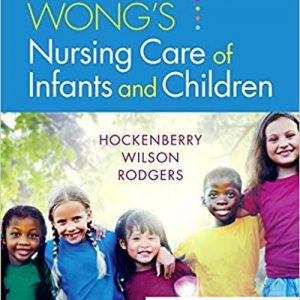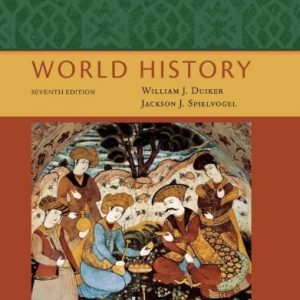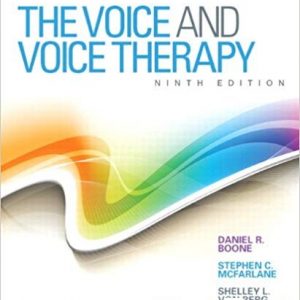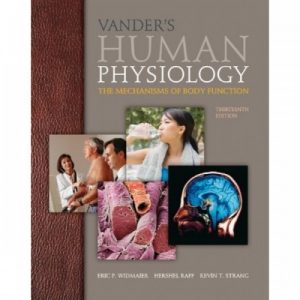Essentials of Maternity Newborn and Women’s Health Nursing 3rd Edition Ricci Test Bank
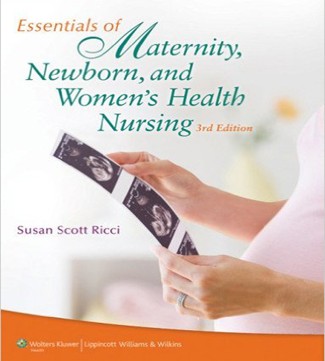
Description:
1. When describing the menstrual cycle to a group of young women, the nurse explains that estrogen levels are highest during which phase of the endometrial cycle?
A) Menstrual
B) Proliferative
C) Secretory
D) Ischemic
2. After teaching a group of adolescent girls about female reproductive development, the nurse determines that teaching was successful when the girls state that menarche is defined as a woman’s first:
A) Sexual experience
B) Full hormonal cycle
C) Menstrual period
D) Sign of breast development
3. A client with a 28-day cycle reports that she ovulated on May 10. The nurse would expect the client’s next menses to begin on:
A) May 24
B) May 26
C) May 30
D) June 1
4. Which female reproductive tract structure would the nurse describe to a group of young women as containing rugae that enable it to dilate during labor and birth?
A) Cervix
B) Fallopian tube
C) Vagina
D) Vulva
5. After teaching a group of pregnant women about breast-feeding, the nurse determines that the teaching was successful when the group identifies which hormone as important for the production of breast milk after childbirth?
A) Placental estrogen
B) Progesterone
C) Gonadotropin-releasing hormone
D) Prolactin
6. The nurse is assessing a 13-year-old girl who has had her first menses. Which of the following events would the nurse expect to have occurred first?
A) Evidence of pubic hair
B) Development of breast buds
C) Onset of menses
D) Growth spurt
7. When describing the ovarian cycle to a group of students, which phase would the instructor include?
A) Luteal phase
B) Proliferative phase
C) Menstrual phase
D) Secretory phase
8. The nurse is explaining the events that lead up to ovulation. Which hormone would the nurse identify as being primarily responsible for ovulation?
A) Estrogen
B) Progesterone
C) Follicle-stimulating hormone
D) Luteinizing hormone
9. The nurse is teaching a health education class on male reproductive anatomy and asks the students to identify the site of sperm production. Which structure, if identified by the group, would indicate to the nurse that the teaching was successful?
A) Testes
B) Seminal vesicles
C) Scrotum
D) Prostate gland
10. The nurse is creating a diagram that illustrates the components of the male reproductive system. Which structure would be inappropriate for the nurse to include as an accessory gland?
A) Seminal vesicles
B) Prostate gland
C) Cowper’s glands
D) Vas deferens
11. The nurse is preparing an outline for a class on the physiology of the male sexual response. Which event would the nurse identify as occurring first?
A) Sperm emission
B) Penile vasodilation
C) Psychological release
D) Ejaculation
12. A woman comes to the clinic complaining that she has little sexual desire. As part of the client’s evaluation, the nurse would anticipate the need to evaluate which hormone level?
A) Progesterone
B) Estrogen
C) Gonadotropin-releasing hormone
D) Testosterone
13. A nurse is conducting a class for a group of teenage girls about female reproductive anatomy and physiology. Which of the following would the nurse include as an external female reproductive organ? Select all that apply.
A) Mons pubis
B) Labia
C) Vagina
D) Clitoris
E) Uterus
14. When describing the hormones involved in the menstrual cycle, a nurse identifies which hormone as responsible for initiating the cycle?
A) Estrogen
B) Luteinizing hormone
C) Progesterone
D) Prolactin
15. A nursing instructor is describing the hormones involved in the menstrual cycle to a group of nursing students. The instructor determines the teaching was successful when the students identify follicle-stimulating hormone as being secreted by which of the following?
A) Hypothalamus
B) Anterior pituitary gland
C) Ovaries
D) Corpus luteum
16. A woman comes to the clinic for an evaluation. During the visit, the woman tells the nurse that her menstrual cycles have become irregular. “I’ve also been waking up at night feeling really hot and sweating. The nurse interprets these findings as which of the following?
A) Menopause
B) Perimenopause
C) Climacteric
D) Menarche
17. After teaching a group of students about female reproductive anatomy, the instructor determines that the teaching was successful when the students identify which of the following as the site of fertilization?
A) Vagina
B) Uterus
C) Fallopian tubes
D) Vestibule
18. A woman comes to the clinic complaining of a vaginal discharge. The nurse suspects that the client has an infection. When gathering additional information, which of the following would the nurse be least likely to identify as placing the client at risk for an infection?
A) Recent antibiotic therapy for an upper respiratory infection
B) Last menstrual period about 5 days ago.
C) Weekly douching
D) Frequent use of feminine hygiene sprays.
19. A group of nursing students are reviewing information about the male reproductive structures. The students demonstrate understanding of the information when they identify which of the following as accessory organs? (Select all that apply.)
A) Testes
B) Vas deferens
C) Bulbourethral glands
D) Prostate gland
E) Penis
20. A nurse is examining a female client and tests the client’s vaginal pH. Which finding would the nurse interpret as normal?
A) 4.5
B) 7
C) 8.5
D) 10
21. When describing the male sexual response to a group of students, the instructor determines that the teaching was successful when they identify emission as which of the following?
A) Semen forced through the urethra to the outside
B) Movement of sperm from the testes and fluid into the urethras
C) Dilation of the penile arteries with increased blood flow to the tissues.
D) Body’s return to the physiologic nonstimulated state
22. A nurse is describing the structure and function of the reproductive system to an adolescent health class. The nurse describes the secretion of the seminal vesicles as which of the following?
A) Mucus-like
B) Alkaline
C) Acidic
D) Semen
Product details:
- ISBN-10 : 160831801X
- ISBN-13 : 978-1608318018
- Author: Susan Ricci
Susan Riccis 3rd edition of Essentials of Maternity, Newborn, and Women’s Health Nursing helps busy students learn what they need to pass the NCLEX-RN and safely practice maternity nursing. Using a nursing process focus, the author helps students go from concept to application by building on previously mastered knowledge. Content covers a broad scope of topics emphasizing common issues to maternity-specific information.A variety of learning features ensure student retention, such as Threaded Case Studies and Comparison Charts, as well NCLEX-Style Student Review questions (more than twice as many questions from last edition). Plus, this book includes a companion website that provides numerous resources for both students and instructors.


